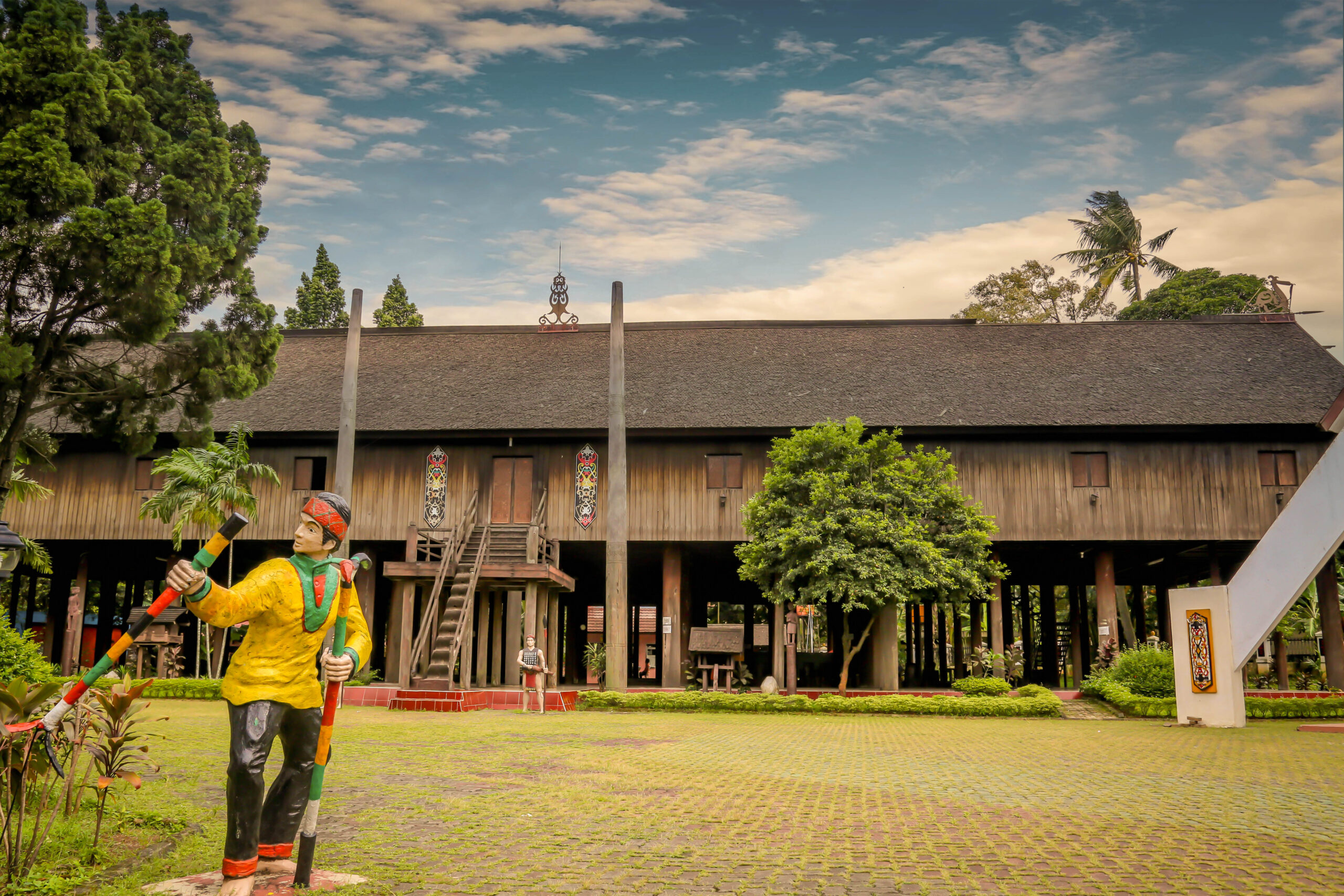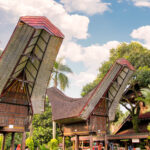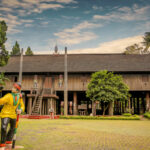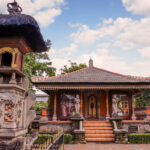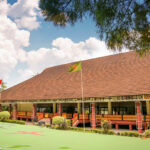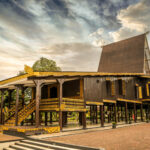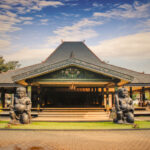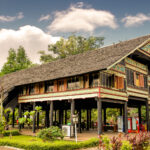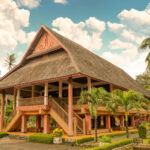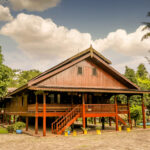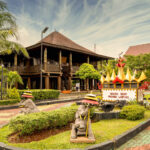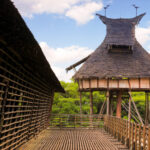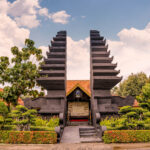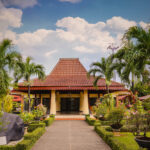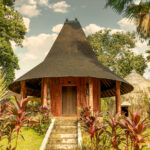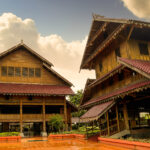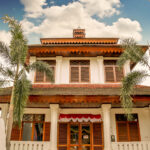Kopisanangan Kinorikatan!
The cultural and natural richness of Central Kalimantan is beyond doubt. Its culture showcases various vocal arts such as Pantun Seloka, Karungut, Kandan, Mansana, Kalalai Lalai, and Ngendau, while its inhabitants live in the diversity of ethnicities such as Javanese, Banjarese, and Dayak.
The Central Kalimantan Pavilion at TMII opens its doors to the Betang House, which holds cultural heritage within its walls. As the residence for the Dayak Ngaju family, this house is divided into a front room for hosting male guests and traditional ceremonies, Karung as the family room, and an open space called Likid for morning activities and various household chores. The house’s roof is adorned with spear carvings, kalakai leaves as symbols of strength and unity, and paintings of the mythical dragon and hornbill. In the center of the house stands the sacred pillar (luking adat) adorned with Kaharingan carvings, representing the Dayak tribe’s belief.
The Betang House also displays Central Kalimantan’s forest products such as damar, rubber, rattan, and pasak bumi roots. Traditional weapons like Mandau (the sword of Kalimantan), spears, blowpipes, and talawang (shield) can be found, along with amethyst stone crafts and woven items.
There is an intriguing story behind the raft (mihing) used for fishing in the upstream of Kahayan River. This mysterious equipment of Sangiang is believed to possess the power to gather wealth on land and fish in the water.
In addition to the Betang House, there are two pantar Sanggaran buildings, two pillars (pantar panjang kamelar Dare) considered as the spiritual path to heaven, and sandung as a place to store the skeletons of the deceased after undergoing special ceremonies.
DID YOU KNOW?
Around the pavilion, there is a pond illustrating a river with a pair of boats. Known as “Banama Riung Ajung kangkari Rayang”, these boats are believed to be the vehicles for the holy spirits and gods in the Hindu Kaharingan belief that is held by the Dayak tribe in Central Kalimantan.

